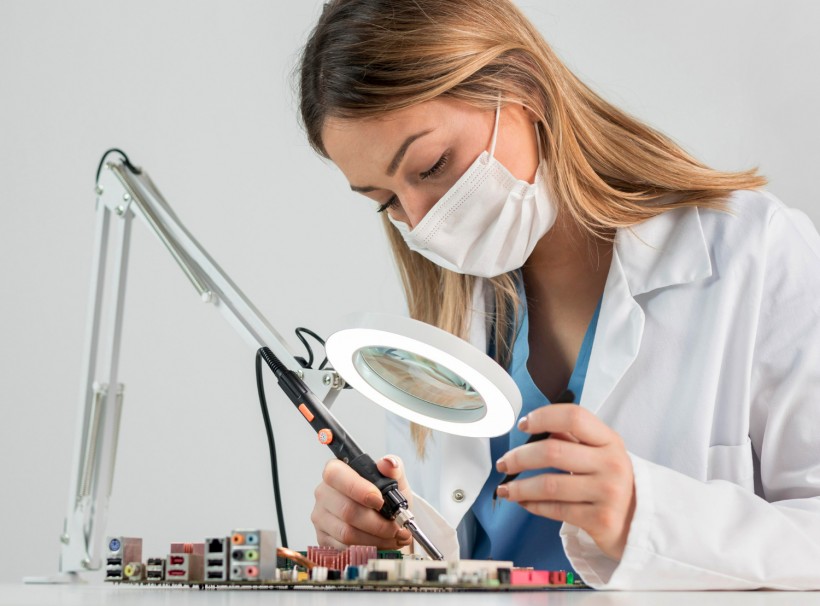
Definition of PCB Assembly
PCB assembly is the process of placing electronic components on a circuit board to create a functional electronic circuit. It's crucial for efficiency and reliability in electronic devices across industries. PCB stands for "Printed Circuit Board."
Introduction
In the fast-paced world of electronics, the heart of innovation lies in PCB assembly. Traditional methods are giving way to a new era of efficiency and precision.
Now, the question arises here: how do you explore Next-Gen techniques in PCB assembly? Basically, it is a journey into cutting-edge technologies shaping the future of electronics manufacturing.
Moreover, with its advanced robotics, 3D printing, high-speed PCBs, and microelectronics, it is revolutionizing manufacturing and helping the methods propel the industry forward. In addition to this, today, you will discover how these techniques address challenges and enhance performance.
In the end, this revolutionary manufacturing sets the stage for a future where electronics are not just assembled but intricately woven with the threads of progress.
So, for that, in this journey, join us because we are going to unravel the complexities and possibilities that come with embracing the next generation of PCB assembly techniques.
Traditional PCB Assembly Techniques
Traditional PCB assembly hinges on conventional soldering techniques and assembly line processes. Soldering is the primary method for attaching components to the board, yet it possesses inherent limitations.
While assembly lines are effective, their processes can prove time-consuming and encounter challenges when adapting to the demands of contemporary electronics. Traditional assembly methods are plagued with common problems such as thermal stress and component misalignment, leading to a search for more advanced and efficient assembly techniques for an ever-evolving industry.
Traditional assembly methods are plagued with common problems such as thermal stress and component misalignment, leading to a search for more advanced and efficient assembly techniques for an ever-evolving industry.
Emerging Technologies in PCB Assembly
In the realm of PCB assembly, emerging technologies encompass advanced robotics and 3D printing. Robotic arms on automated assembly lines elevate precision and efficiency, while 3D printing facilitates the creation of intricate structures while simultaneously minimizing material waste.
These technological strides mark a pivotal shift towards more streamlined and innovative manufacturing processes. Furthermore, advanced materials, such as flexible substrates and conductive inks, contribute significantly to improved performance and durability.
In addition to improved capabilities, these advancements also promise a more sustainable approach to electronic manufacturing, signaling a transformation in PCB assembly.
High-Speed and High-Frequency PCBs
In the domain of PCBs, high-speed and high-frequency applications demand specialized assembly techniques. These include advanced testing and inspection methods to ensure compliance with the requirements of cutting-edge technologies like 5G and IoT.
Maintaining signal integrity is paramount, given the swift transmission speeds these PCBs handle. The challenges inherent in assembling these sophisticated circuits necessitate precise methodologies.
Transitioning from conventional approaches to these advanced techniques is crucial for industries relying on rapid data transmission.
Miniaturization and Microelectronics
In the realm of electronics, miniaturization and microelectronics are steering PCB assembly towards smaller, more powerful devices. This trend involves microscopic components and specialized assembly processes.
Challenges related to thermal management and the delicate nature of miniaturized components are being addressed through precision techniques and advanced materials. This transition to smaller scales not only enhances device performance but also requires careful consideration in design and manufacturing.
As industries adapt to this shift, the demand for intricate and compact PCB assembly techniques continues to grow, necessitating a strategic approach to meet the needs of evolving technologies.
Case Studies and Success Stories
Examining case studies and success stories provides tangible evidence of the benefits derived from adopting next-gen PCB assembly techniques. Companies at the forefront of these advancements showcase improved efficiency, reduced production costs, and enhanced product reliability.
These real-world examples serve as a testament to the transformative power of embracing modern assembly methods.
By illustrating how these techniques are applied in actual manufacturing scenarios, these case studies offer valuable insights for other industries seeking to optimize their PCB assembly processes.
Challenges and Considerations
Transitioning to next-gen PCB assembly methods presents challenges and considerations for industries.
While these advanced techniques promise efficiency and innovation, initial investments in specialized equipment and workforce training can be substantial. Moreover, potential disruptions during the shift from traditional to modern assembly methods need careful management.
Balancing the benefits of improved performance against the associated costs is a crucial consideration. Strategic planning and a proactive approach can help overcome challenges, leading to a smooth transition and long-term success.
Future Outlook
The future of PCB assembly holds exciting prospects. Continued advancements in automation, artificial intelligence, and materials science are set to refine assembly processes further.
The integration of machine learning algorithms for quality control and the development of self-healing materials are on the horizon, promising an even more sophisticated and resilient generation of electronics.
Conclusion
In conclusion, exploring next-gen techniques in PCB assembly unveils a landscape of innovation and efficiency. As industries push the boundaries of what is possible in electronics, the adoption of these advanced assembly techniques becomes not just a choice but a necessity.
Pioneers who embrace these cutting-edge methods are shaping the future of electronics manufacturing, and they are leading a journey of continued transformation and progress.
Frequently Asked Questions (FAQs)
Q: What is PCB assembly?
A: PCB assembly is the process of placing electronic components on a circuit board to create a functional electronic circuit.
Q: What are the traditional PCB assembly techniques?
A: Traditional PCB assembly techniques involve the following methods:
-
Soldering methods
-
Assembly line processes
Q: How do emerging technologies impact PCB assembly?
A: Emerging technologies impact PCB assembly by the following methods:
-
Advanced robotics
-
3D printing
-
By enhancing precision and efficiency in PCB assembly
Q: What challenges do high-speed and high-frequency PCBs pose?
A: High-speed and high-frequency PCBs pose challenges in maintaining signal integrity and demand specialized assembly techniques.
* This is a contributed article and this content does not necessarily represent the views of sciencetimes.com














